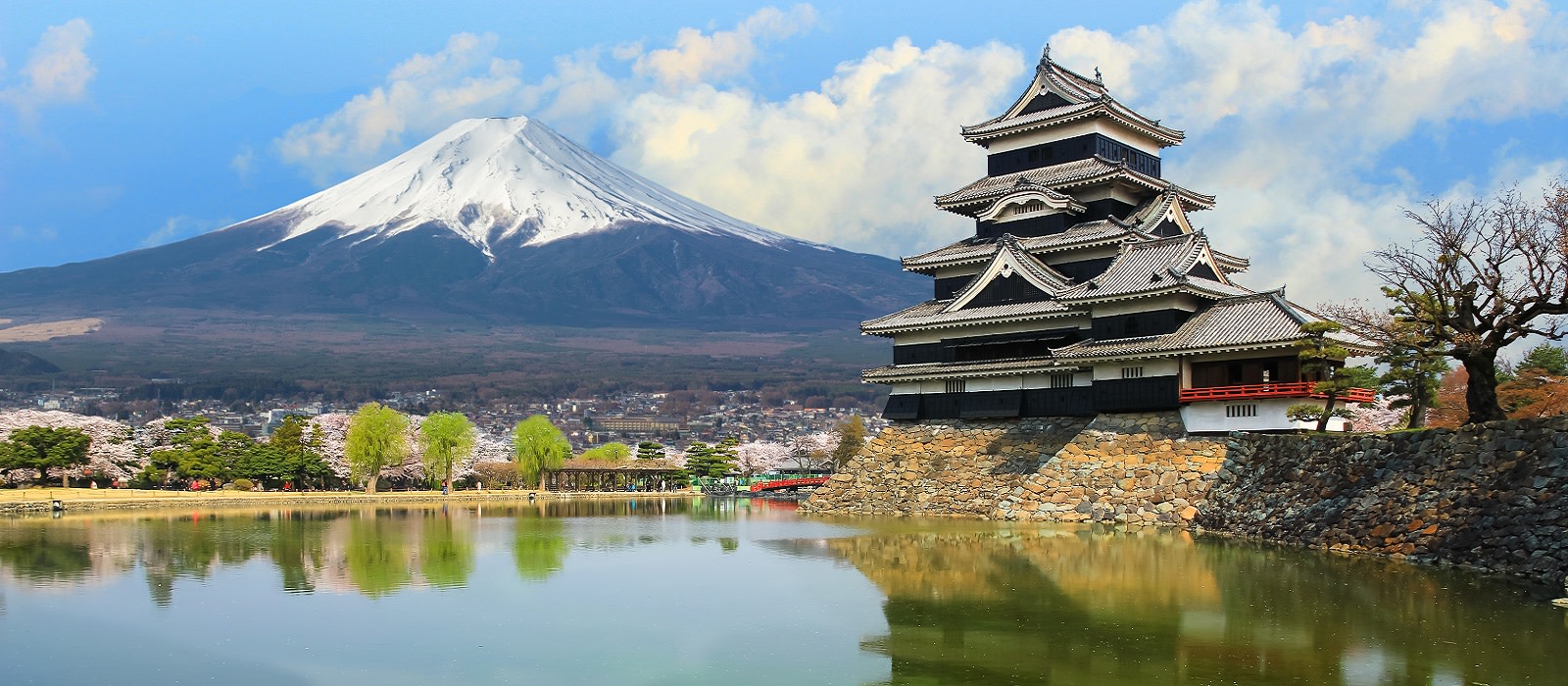Less than two hours from Hakuba is Matsumoto City, a prominent castle town with rich history dating back to the 16th century. Here are some of our recommended sights and experiences to make the most of your day in the city.
Matsumoto Castle
(AKA Matsumoto-jo or Crow Castle)
Considered one of Japan’s National Treasures, Matsumoto Castle is one of 12 remaining original castles and the oldest of the five-tiered, six-story castles in Japan. It’s black lacquered walls, which give it the nickname “Crow Castle”, and storied structure make it unique to other castles in Japan.
As Matsumoto Castle was originally used as a fortress, there are few windows but numerous narrow arrowslits built for the castle’s defense. The view from these arrowslits is less ominous in modern times, offering incredible views of the city below with a backdrop of the Japanese Alps.
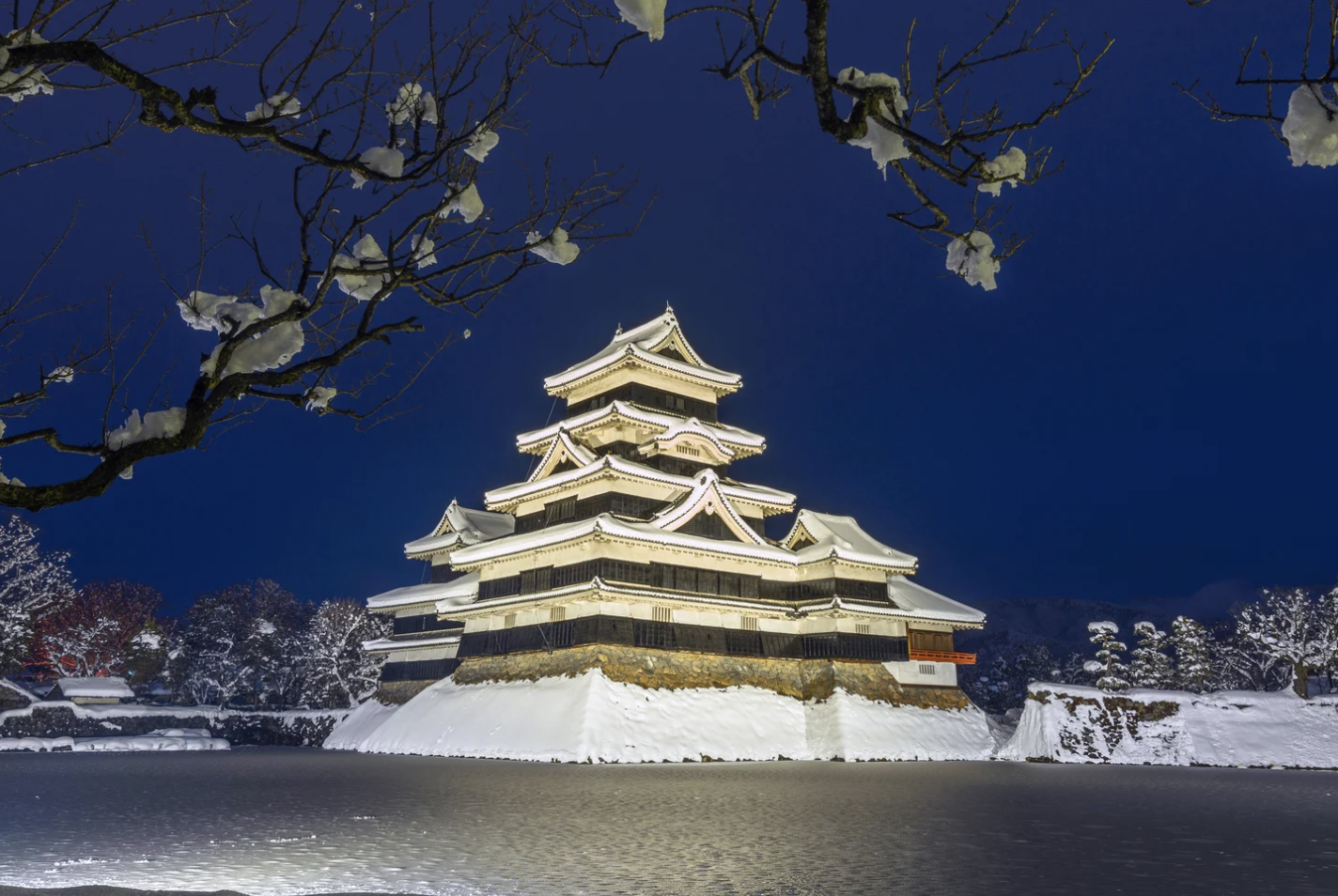
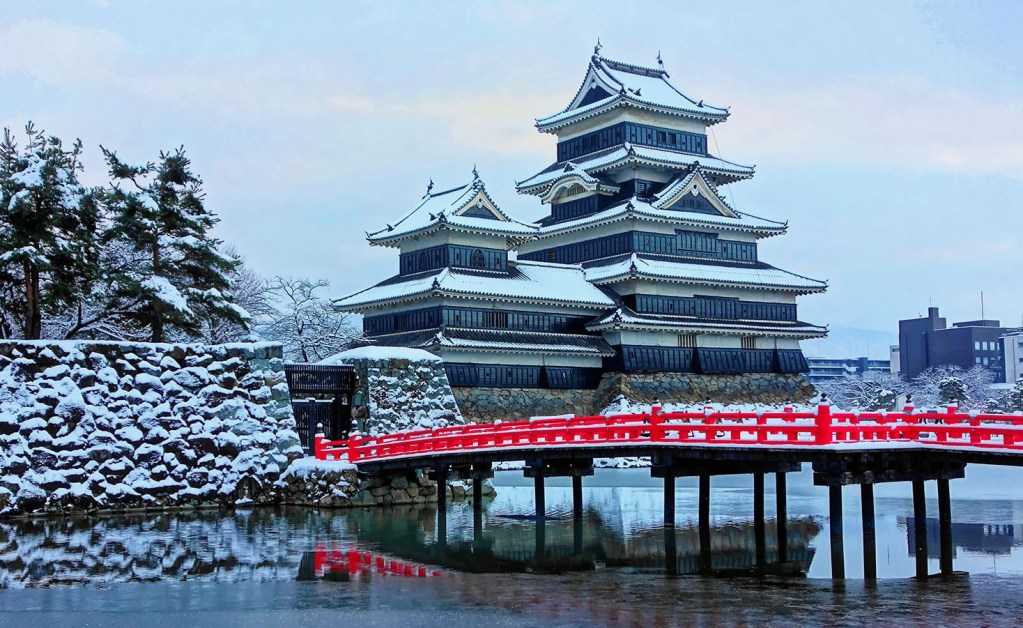
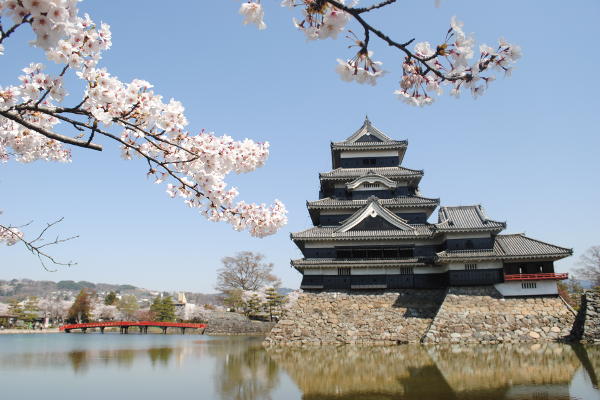
“Instagrammable” has become an adjective commonly attributed to the castle grounds. From the iconic moat brimming with koi and circling swans, to the imposing castle structure juxtaposed by the meticulously kept gardens, you will feel like you have been transported to another time and place in history worthy of capturing.
Nakamachi & Nawate Street
Take a stroll down historical Nakamichi and Nawate streets whilst in Matsumoto. Nakamichi’s black and white lacquered traditional storehouse buildings (kura) stand apart from the rest of the city. In the Edo Period, the city’s merchants used to live in this area and the rich sense of history stays with you as you visit shops, cafes and restaurants. Nakamichi makes for a great place to seek out soba (buckwheat noodles) shops where they use buckwheat flour grown in Matsumoto or other places in Nagano. In the winter, try to find a place that serves tojisoba, another Matsumoto specialty that uses a mini bamboo basket to dip the noodles into a steaming hotpot.
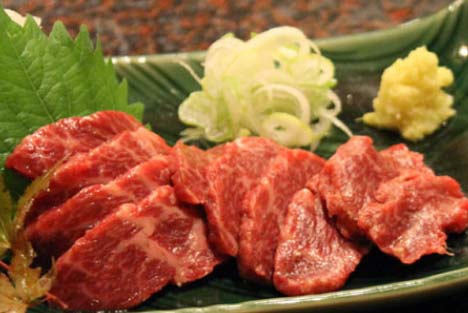
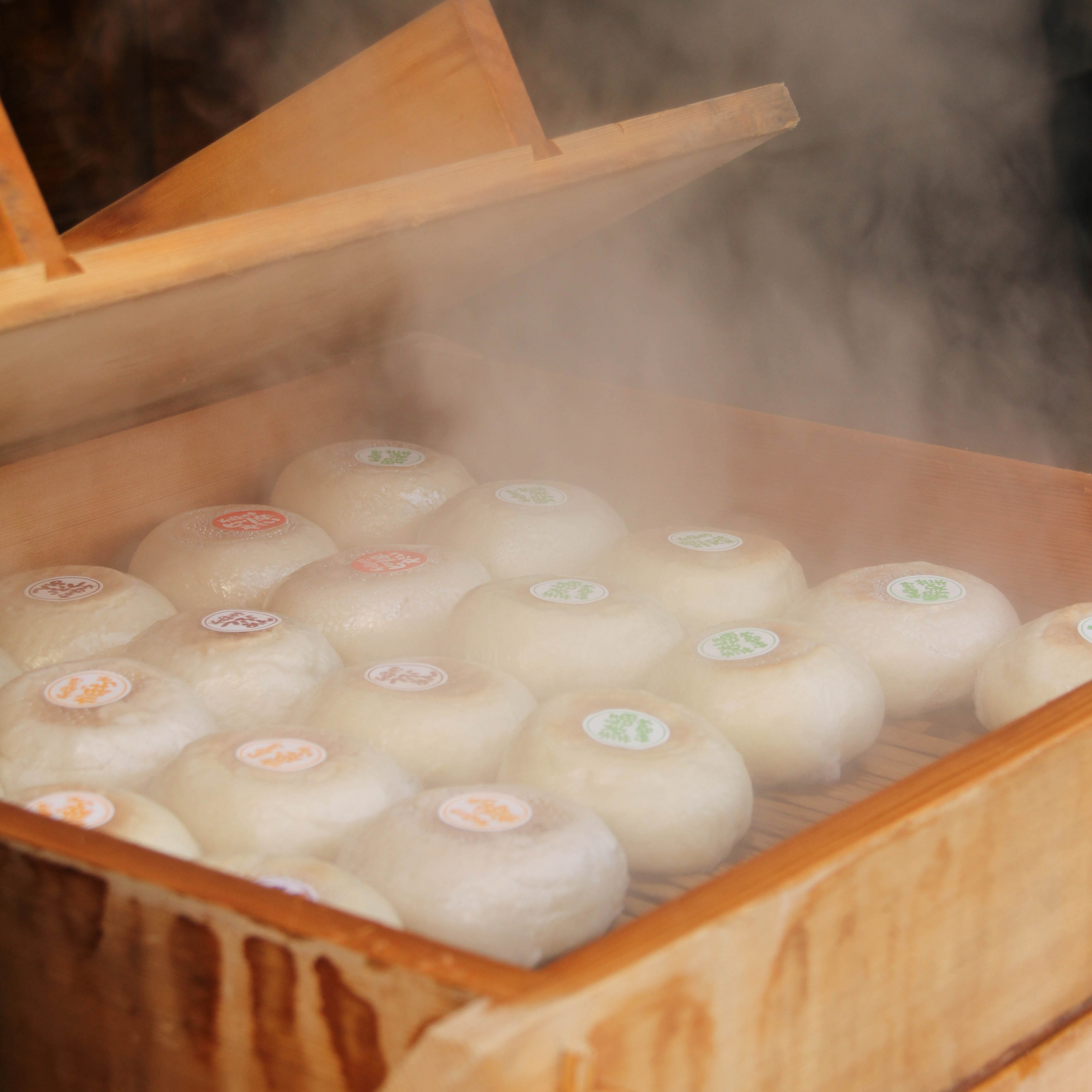
Parallel to Nakamichi is Nawate Street, a pedestrian-only souvenir and regional snack hotspot. Stalls offer regional delicacies senbei (Japanese crackers made from glutinous rice), taiyaki (Japanese fish-shaped sweet cake with filling) or the Nagano-specific and local specialty, oyaki, which is made with buckwheat dough wrapped around stuffing. Oyaki resembles a cross between a dumpling and a stuffed bun filled with ingredients and then steamed and/or grilled. Common fillings are Nozawana greens, eggplant, mushrooms, pumpkin, red bean paste, and sansei (mountain vegetables).
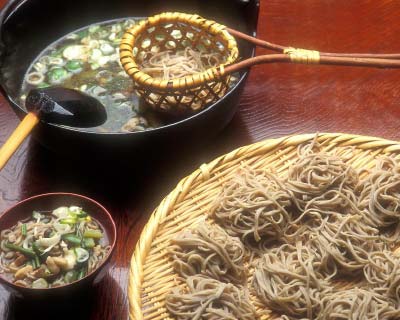
For the adventurous palate, basashi or raw horsemeat is a regional delicacy to Matsumoto. Note that it is commonly called sakura niku given its bright pink color and sakuranabe when served as a Sukiyaki hot pot with thinly sliced horsemeat and vegetables.
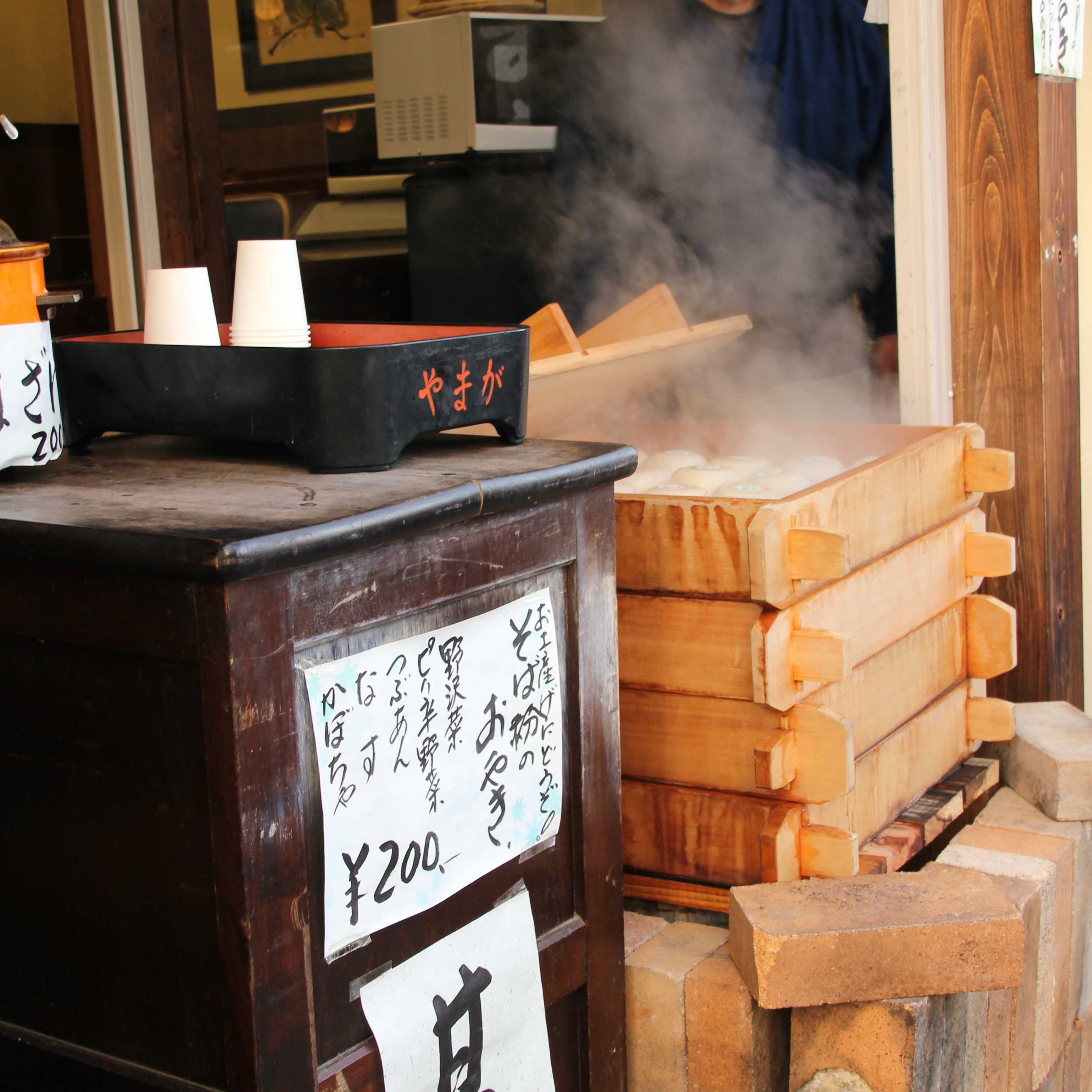
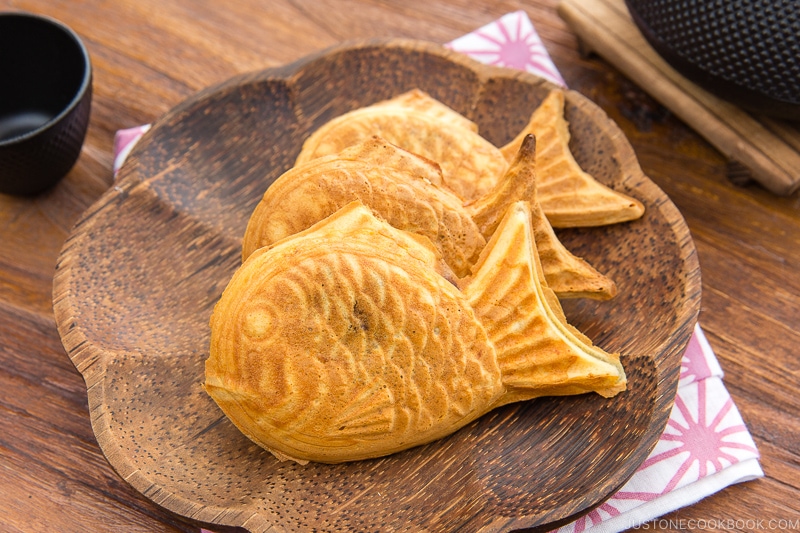
Ishii Miso Brewery
Ishii Miso was founded in 1868 (the end of the Edo era) and is still producing miso using their unique traditional natural methods.
Miso, or fermented soybean paste, is a staple in Japanese cuisine. Nagano prefecture is a top producer of miso (46%) in Japan. Where mass-produced miso is usually fermented only over a few months, Ishii Miso ferments their miso for over three years in wooden barrels, adding to their distinctly unique flavor profile.
Visit the brewery and tour the inside of the miso storehouse. Stay for lunch containing miso soup, salad with miso dressing, rice balls, and even ice cream using miso.
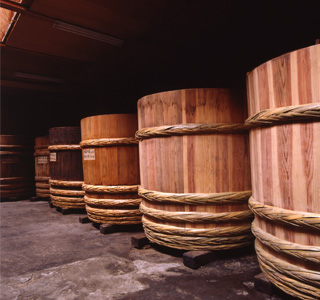
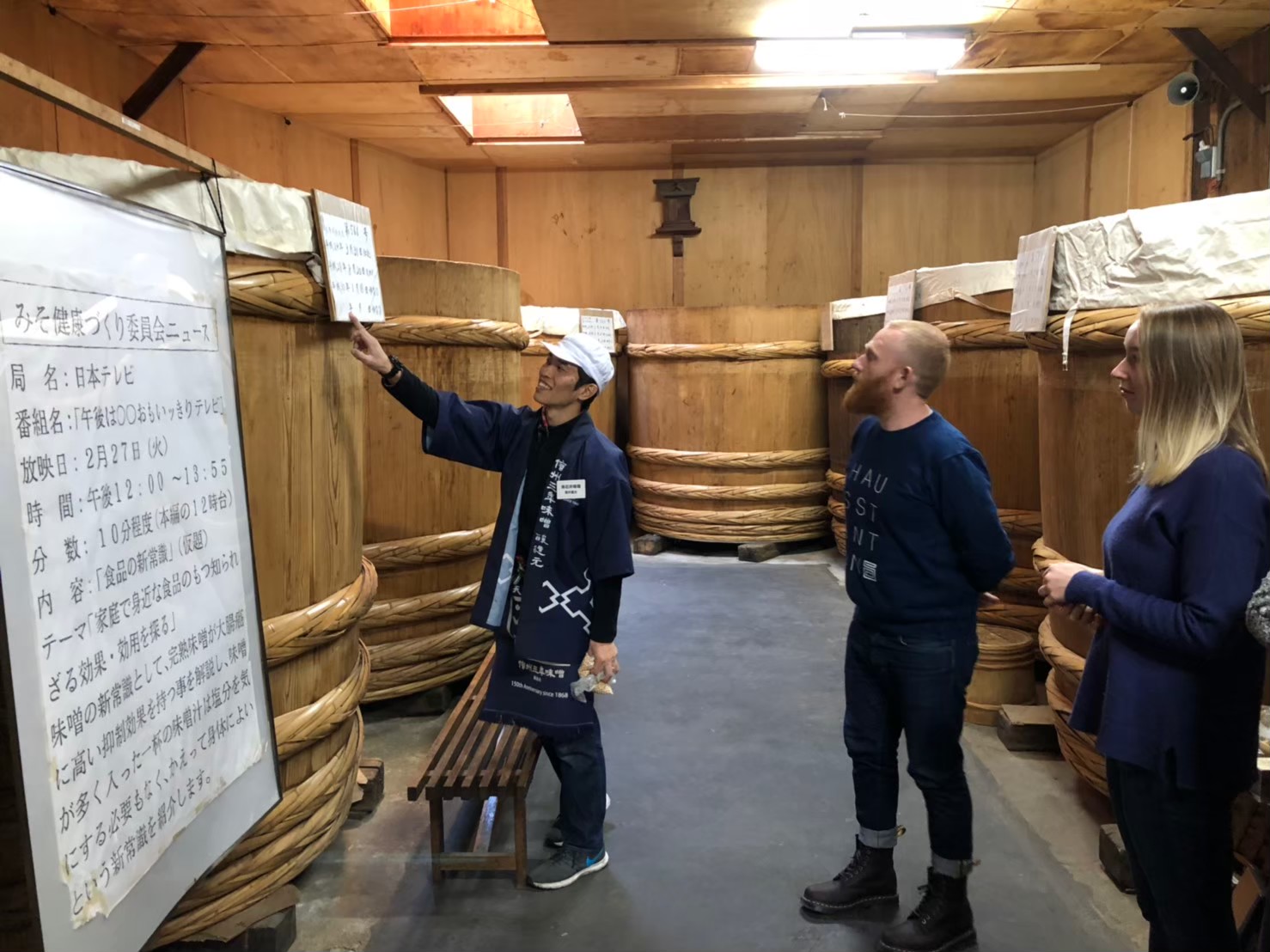
Japan Ukiyo-e Museum
When “ukiyo-e” is mentioned, Hokusai’s “The Great Wave” may be one of the first images that come to mind. You will see prints of Hokusai and more at the Ukiyo-e Museum in Matsumoto which boasts the largest private collection of ukiyo-e prints covering an extensive amount of artists and genres.
“Ukiyo-e” translates to “pictures (e) of the floating world (ukiyo)”. It developed as an art form in the 17th century during the Edo period. As the economy thrived at a rapid pace, the Japanese lifestyle changed to focus more on pleasure. This lifestyle was described as living in a “floating world”, hence the name of the pictures that were created during that time.
The styles of these woodblock prints are so unique and classic to Japanese culture. If you are seeking more depth to your Japanese art collection, a visit to the Ukiyo-e Museum is a must.
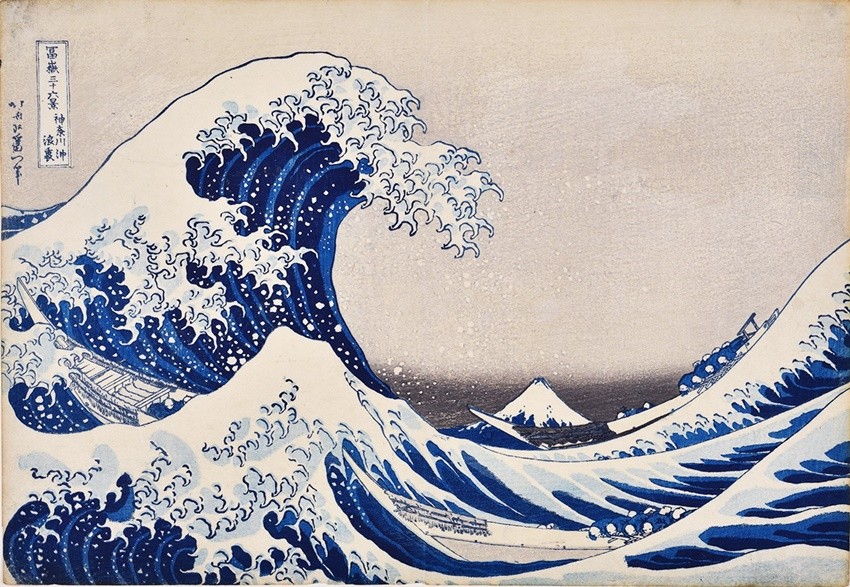
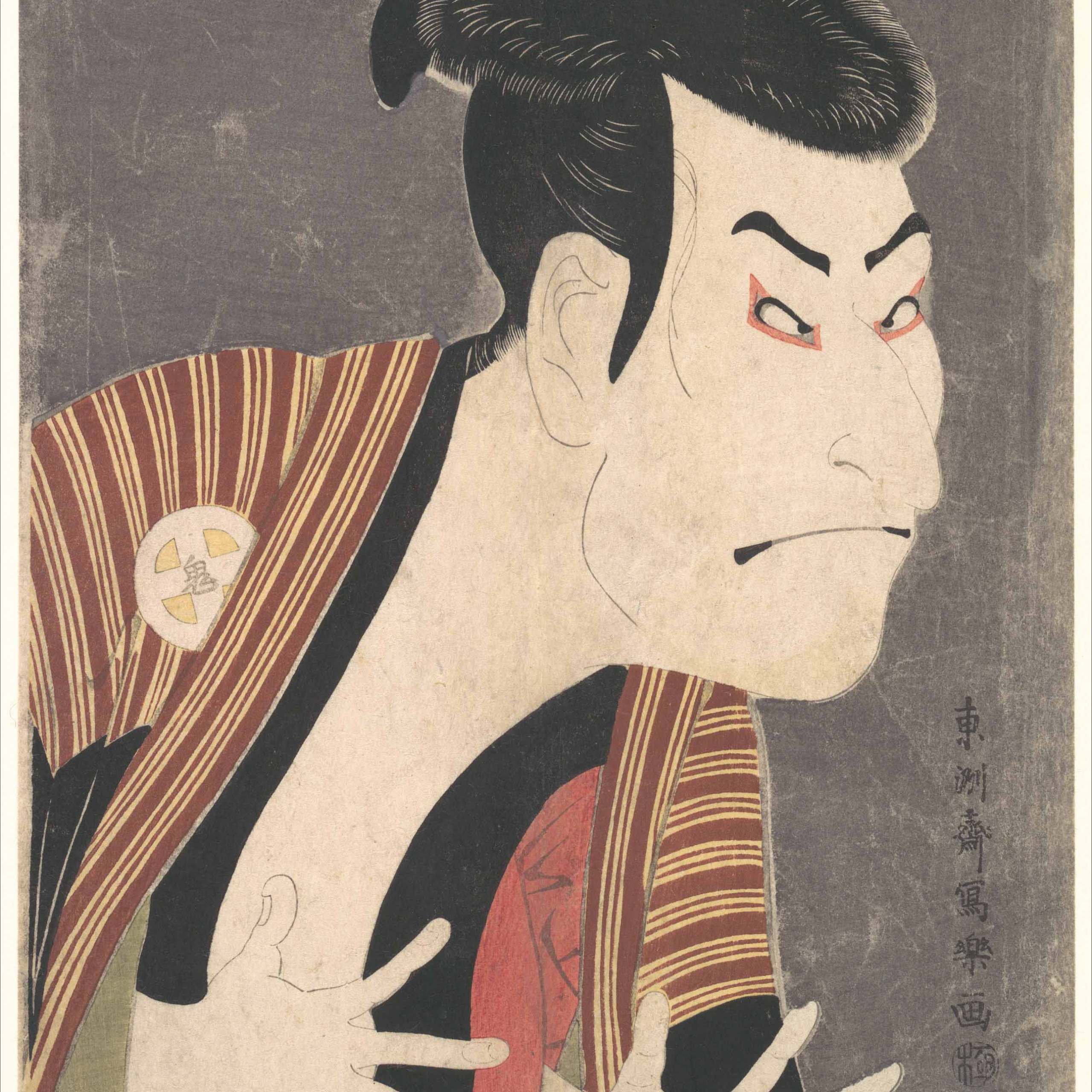
Matsumoto City Museum of Art
The Matsumoto City Museum of Art showcases the works from artists who are connected to Matsumoto. Famous avant-garde Matsumoto-born Yayoi Kusuma, most widely recognized by her polka dot riddled works, is featured in permanent collections inside and outside the museum. The museum’s collection showcases a wide genre of artworks including the works of Munehide Hosokawa, a Matsumoto-born sculptor, and the calligrapher Shinzan Kamijo.
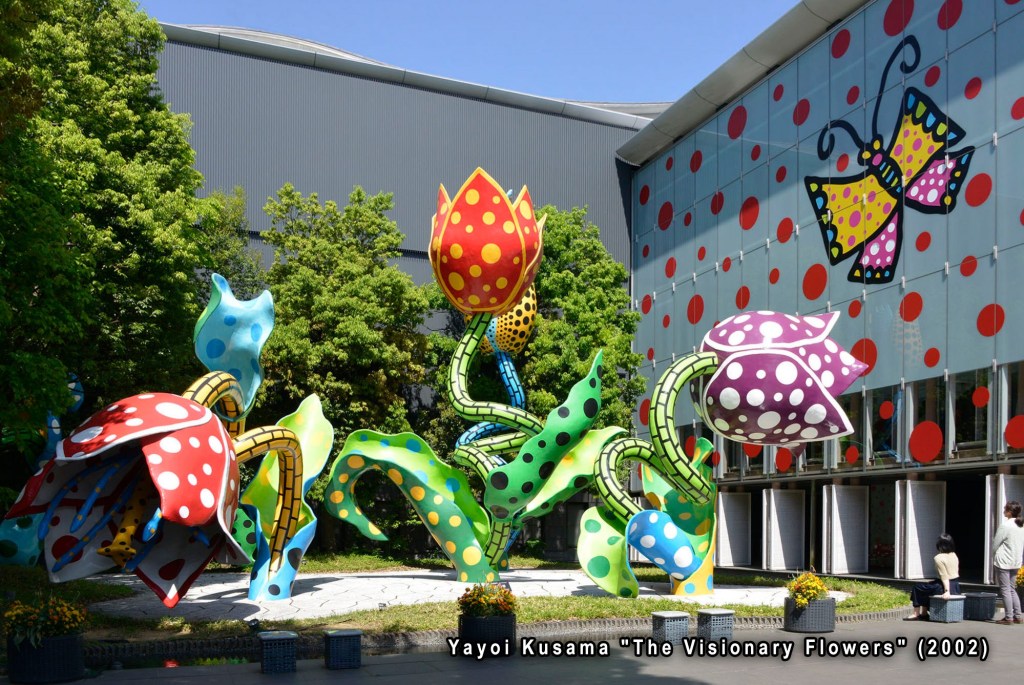
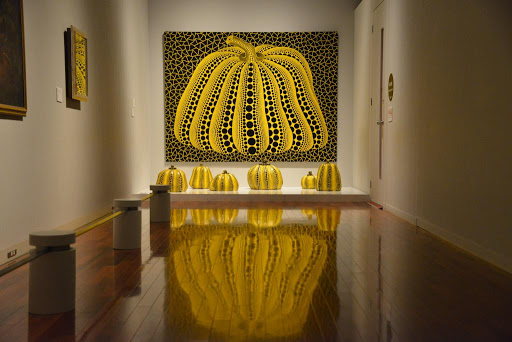
With so much to see, taste and experience, Matsumoto makes for the perfect day trip destination.

 English
English

